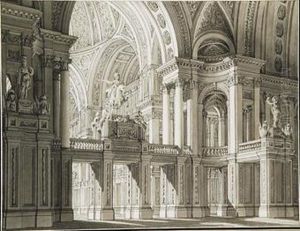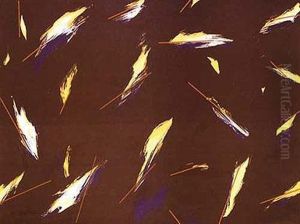Jose Alvarez Cubero Paintings
José Álvarez Cubero was a prominent Spanish sculptor born on April 23, 1768, in Priego de Córdoba, Spain. His work is often celebrated for its classical style, which was heavily influenced by his studies and experiences in Rome and Paris. From a young age, Álvarez Cubero showed a remarkable talent for sculpture, prompting his move to Madrid where he furthered his education in the arts. His evident skill soon earned him a scholarship from the Spanish government to study in Rome, a city that played a critical role in shaping his artistic direction and where he was deeply influenced by the Neoclassical movement, a dominant style of the time that sought to revive the simplicity and elegance of ancient Greek and Roman art.
In Rome, Álvarez Cubero absorbed the works of classical antiquity and the Renaissance, honing his skills and developing a refined aesthetic that would define his career. His talent did not go unnoticed; he won several awards and the admiration of his peers. Among his notable works from this period is the statue of 'Ganymede', which showcases his mastery in depicting the human form with both grace and precision.
Following his successful stint in Rome, Álvarez Cubero moved to Paris, where he was exposed to the vibrant art scene of the French capital and continued to evolve his craft. During his time in Paris, he was influenced by the works of contemporary artists and the city's rich cultural environment. However, the outbreak of the Napoleonic Wars and the subsequent political turmoil across Europe made his stay in Paris challenging.
Despite these difficulties, José Álvarez Cubero's reputation as a sculptor continued to grow. He was eventually appointed as the court sculptor to King Joseph Bonaparte, a position that, while controversial, afforded him the opportunity to undertake significant commissions and further establish his name in the art world. Upon his return to Spain, he continued to receive important commissions, including works for the Royal Palace of Madrid.
Álvarez Cubero's contributions to Spanish sculpture are significant; his works are characterized by their technical excellence and emotional depth, blending classical ideals with a sense of realism. He is often regarded as one of the foremost Spanish neoclassical sculptors, and his legacy is preserved in the collections of major museums in Spain and abroad.
José Álvarez Cubero passed away on November 26, 1827, in Madrid, Spain. His death marked the loss of a key figure in Spanish art, but his influence persisted, inspiring future generations of sculptors to pursue a balance between classical beauty and realistic representation. His life and work remain a testament to the enduring appeal of neoclassical art and its principles of harmony, clarity, and proportion.

